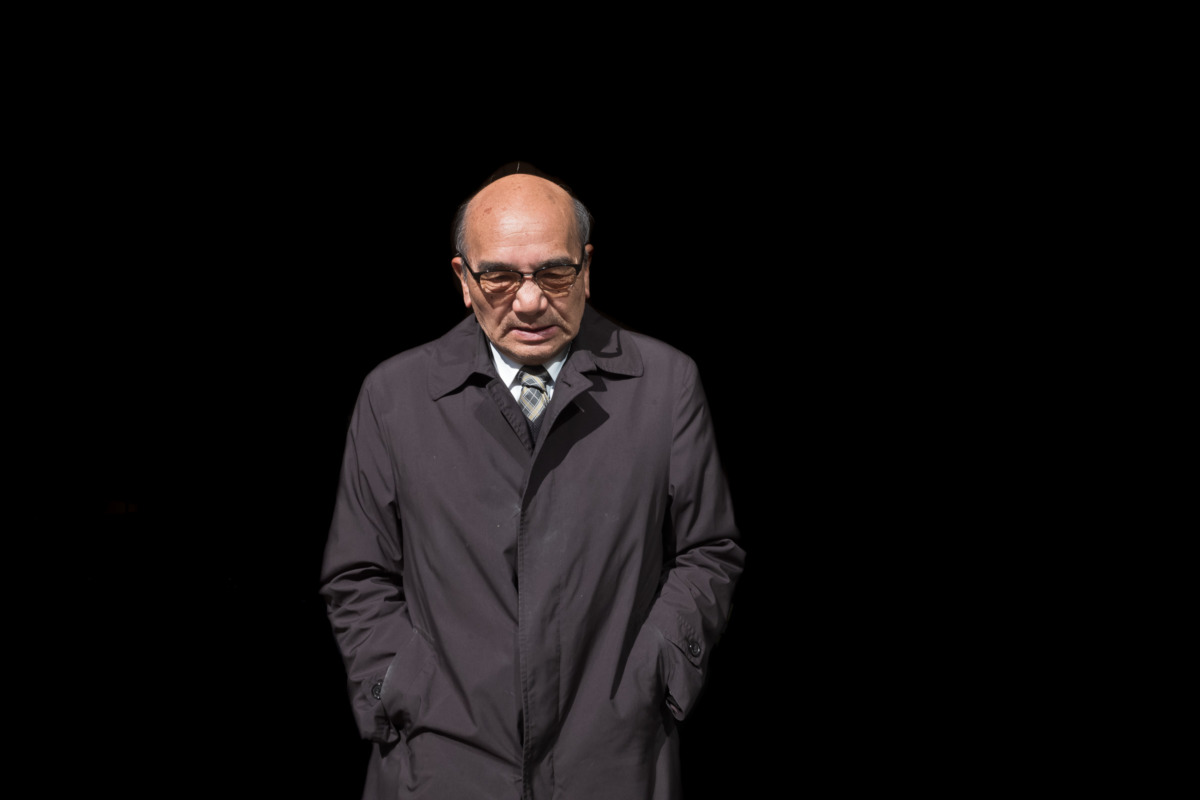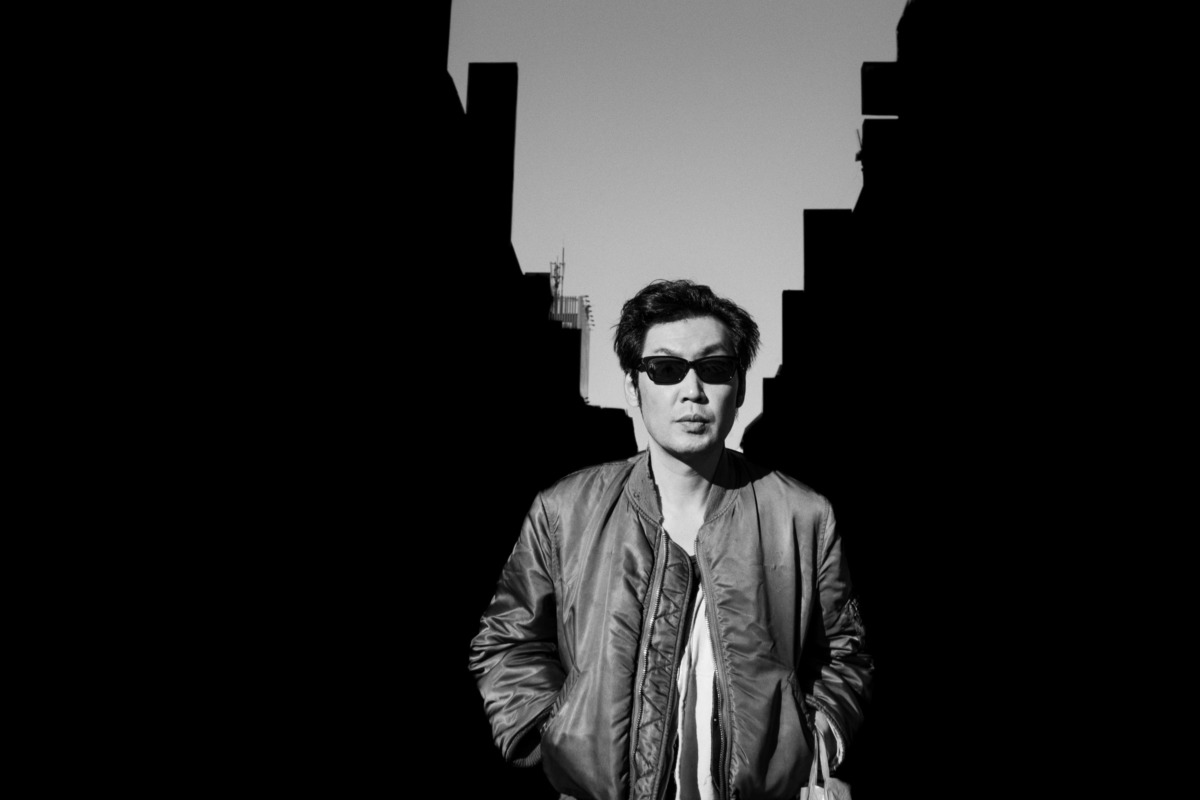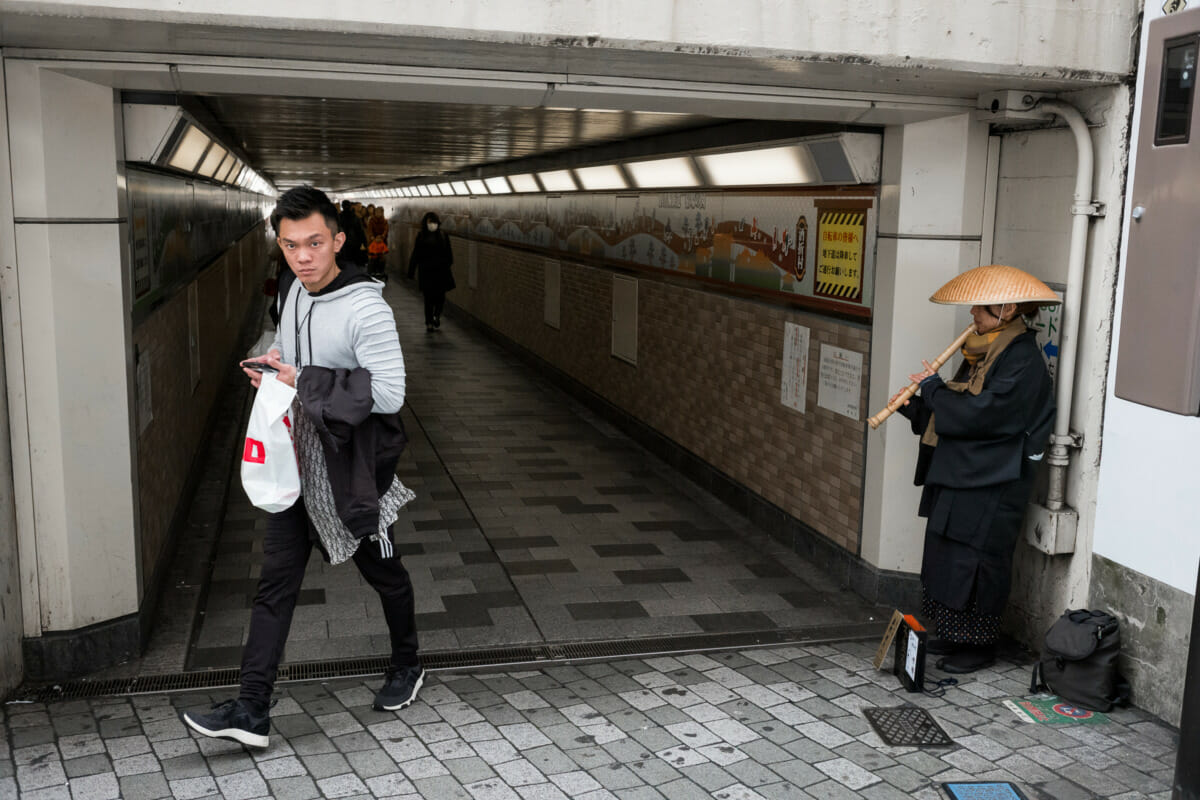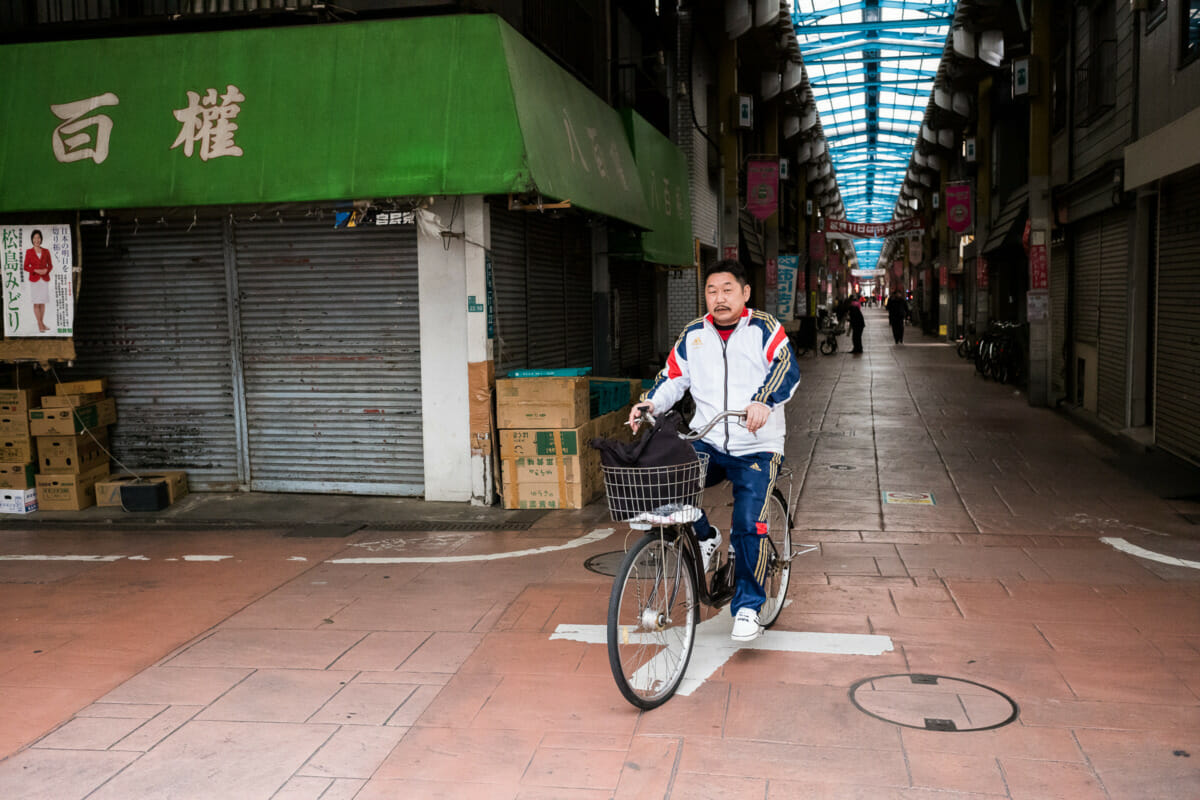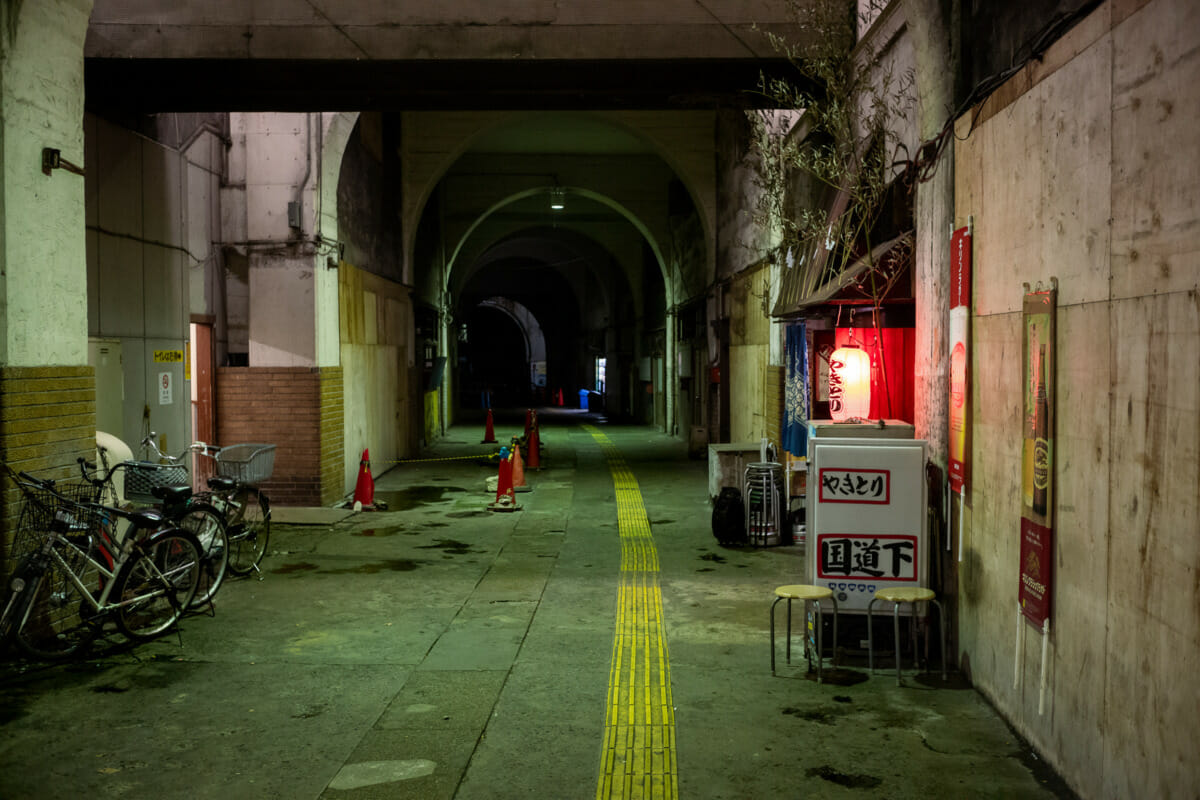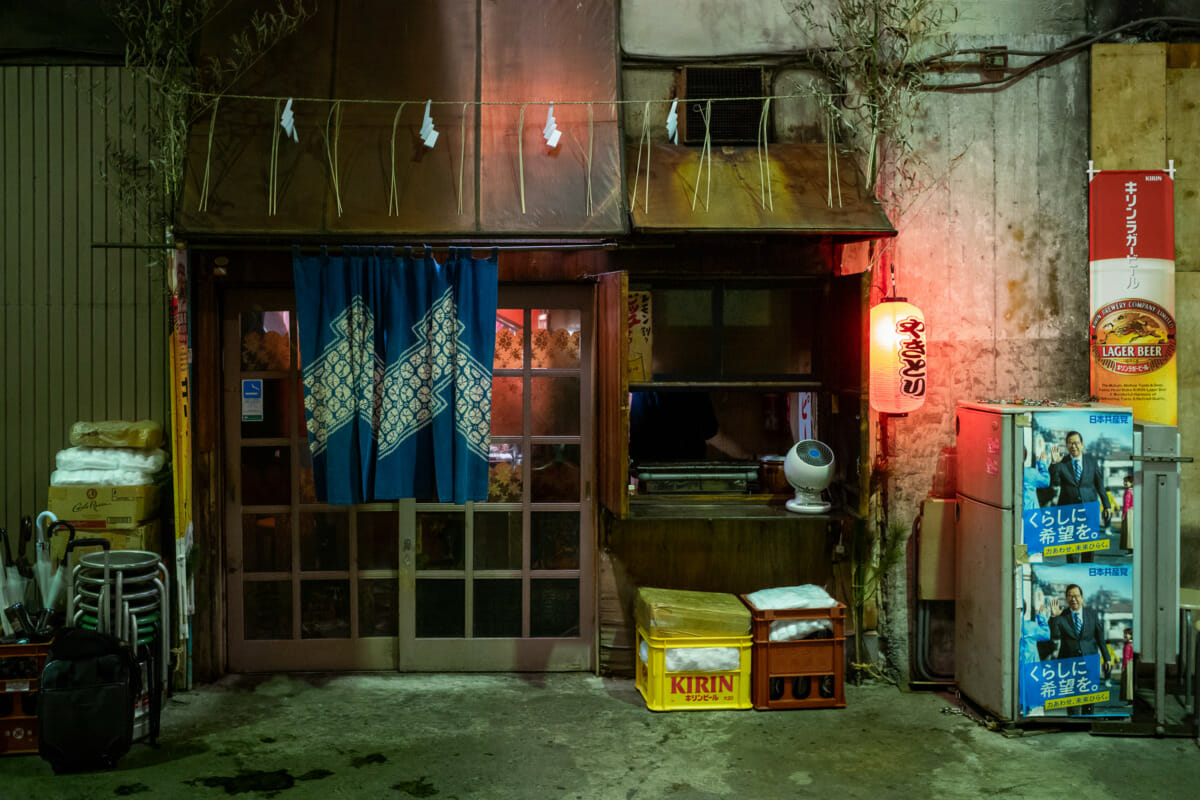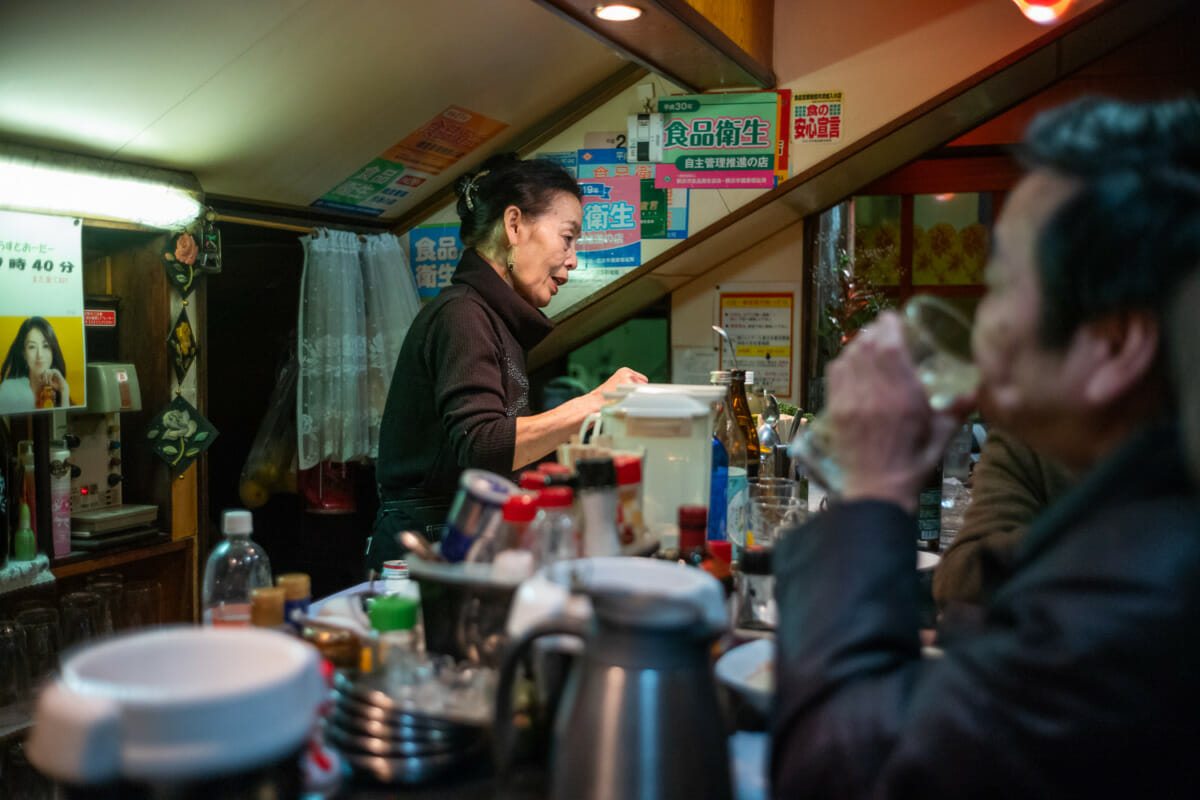Sadly even the weather didn’t seem to brighten up this salaryman’s thoroughly miserable looking Monday morning.
Timeless Tokyo in monochrome shades
Towards the end of last year, I took a photograph from the same spot as the one in this post. It can be seen here should you wish to make a comparison. A photo that I probably prefer due to the subject’s expression.
The visible smartphone, however, makes it very contemporary, whereas the shot below has a far more timeless feel. An element that in modern, rapidly changing Tokyo, is increasingly hard to achieve.
Buddhist street musician surprise
Tokyo light and dark, the young and old
An old Tokyo shopping street’s shutters and stripes
A little Japanese bar down a mostly disused old tunnel
Down an old and now more or less disused tunnel, one little bar remains. Catering for the small number of late afternoon drinkers who can squeeze inside, it’s the last business left, but even after several decades of serving drinks and really quite delicious food, the owners have no intention of quitting just yet. A decision that’s much appreciated by both the very regular regulars, and those that merely pop in unexpectedly.
